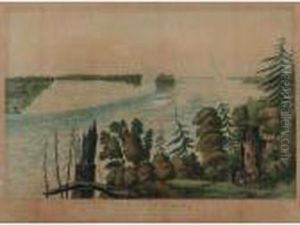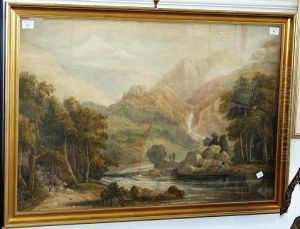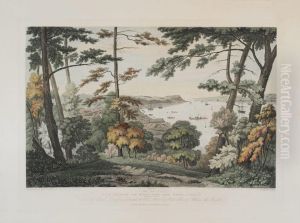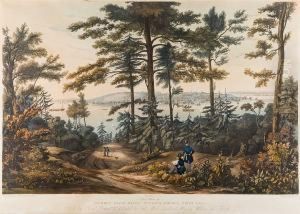James Pattison Cockburn Paintings
James Pattison Cockburn was a British artist, known for his watercolor paintings and printmaking, particularly his topographical and military subjects. Born on March 18, 1779, in New York, to a British military family, Cockburn would go on to follow in his family's footsteps and pursue a career in the military, which significantly influenced his work as an artist.
Cockburn attended the Royal Military Academy in Woolwich, where he received a formal education that included training in drawing and map-making. These skills would later prove invaluable in his artistic pursuits. He joined the Royal Artillery in 1798 and had a distinguished military career, rising to the rank of captain.
Throughout his military service, Cockburn was stationed in various locations, including Canada, where he was deployed between 1822 and 1827. His travels provided him with a wealth of subject matter for his art. He captured the landscapes, architecture, and scenes of daily life of the places he visited, with a particular interest in the Canadian landscape. His works provide a valuable historical record of the early 19th century in these regions.
Cockburn's artistic style was characterized by detailed and precise representations, reflective of his military training in map-making. His watercolors, in particular, are noted for their clarity and the use of light and color to convey the atmosphere of the scenes he depicted.
In addition to his paintings, Cockburn produced a significant number of engravings and aquatints, which helped to disseminate his work to a wider audience. He published several collections of prints, which were well-received and contributed to his reputation as a skilled topographical artist.
Cockburn's work was exhibited at the Royal Academy and he was elected as an associate of the Old Watercolour Society in 1821, which reflected his standing in the British art world of his time. After retiring from the military in 1829, he continued to focus on his art, traveling and painting until his death on February 15, 1847, in Woolwich, England.
James Pattison Cockburn's legacy is preserved in the collections of various museums and institutions, and his artworks remain a testament to his skill in capturing the essence of the landscapes and societies he encountered during his life.






































